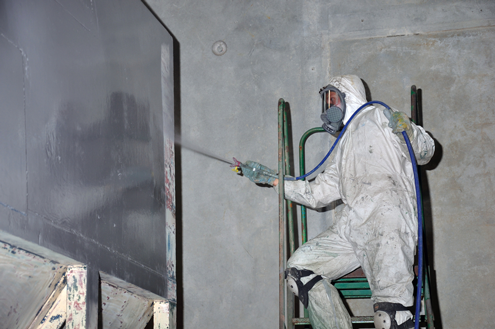The workplace can present opportunities for exposure to chemicals seldom found in other settings, as well as higher exposures to common chemicals found in everyday life. The multidisciplinary practice of occupational health and safety aims to evaluate potential health and safety risks and, if necessary, prevent or decrease them. Whether in the context of addressing concerns at a particular work site (e.g., designing sampling plans, evaluating data quality, developing databases and visualizations, performing risk assessments) or broader issues (e.g., interpreting occupational epidemiology studies, evaluating the merits of occupational exposure limits [OELs]), Gradient scientists bring formidable scientific strengths to the practice of occupational health and safety.
Example Publications:
Dodge, DG; Engel, AM; Prueitt, RL; Peterson, MK; Goodman, JE. 2021. “US EPA’s TSCA risk assessment approach: A case study of asbestos in automotive brakes.” Inhalation Toxicol. 33(9-14):295-307.
Greenberg, GI; Beck, BD. 2019. “YPLL: A comprehensive quantitative tool to evaluate worker risk under green and sustainable remediation.” In Encyclopedia of Environmental Health (Second Edition), Volume 6. (Ed.: Nriagu, J), Elsevier B.V. p468-477.
Lewandowski, T; Dodge, D. 2016. “Windows of susceptibility. Do OELs really protect workers from reproductive and developmental effects?” The Synergist June/July. p22-25.
Beyer, LA; Greenberg, G; Beck, BD. 2014. “Evaluation of potential exposure to metals in laundered shop towels.” Hum. Ecol. Risk Assess. 20(1):111-136.

Occupational Health and Safety Is Multidisciplinary and Includes:
Analysis of Data Collected at a Lead Battery Recycling Facility
Gradient analyzed years of occupational airborne lead, cadmium, and arsenic data and provided the client with a number of insights and recommendations regarding health risks, exposure controls, regulatory compliance, and risk communication.
Evaluation of Pandemic Best Practices in the Workplace
For an infrastructure products and services company, Gradient evaluated company best practices for controlling occupational exposures to SARS-CoV-2 in the context of occupational and public health agency guidelines.
Evaluation of Occupational Information for Purposes of the Toxic Substances Control Act (TSCA)
For an industrial client, Gradient performed an evaluation of occupational exposure and toxicity information for trichloroethylene (TCE) to provide support in responding to US EPA’s request for information under the 2016 TSCA.
Exposure of Workers to Metals in Materials Used for Road Construction
Gradient assessed potential worker exposure to metals associated with smelter material used for construction during road and bridge repair work. We conducted a study in which volunteers handled material in a manner that simulated contact to smelter materials during construction activities. Using these results, we calculated exposure from dermal contact and inadvertent ingestion of material on hands.
Health Analyses Regarding Carbon Nanotube Manufacture
For a carbon nanotube (CNT) manufacturer, Gradient addressed worker and customer health concerns, specifically with regard to potential exposures to polycyclic aromatic hydrocarbons (PAHs) formed unintentionally during production. Our work helped the client take proper steps to ensure appropriate product stewardship.
Developmental and Reproductive Toxicity Assessments
On an ongoing basis, Gradient evaluates potential developmental and reproductive toxicity (DART) risks posed to pregnant employees at a workplace. These evaluations assist the employer in determining the need for exposure controls.